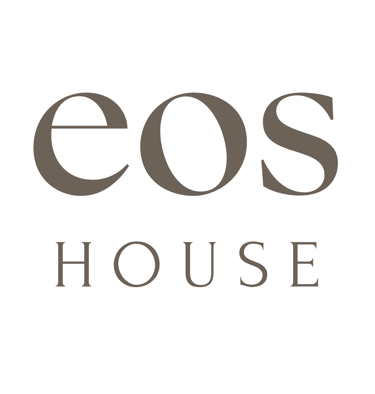
Why is the Immersive Self Journal™ was born?
When the Immersive Self Journal™ has been conceived, the impulse came from a tension observed in readers of many personal development books: a gap between what is offered, and what is really lived. A gap between inspiration and recognition. Between rich ideas and real change. eos House wanted to close that gap.
There is enormous value in books of personal development: ideas, frameworks, encouragement. Yet there are also patterns that suggest these books, while powerful, carry a hidden shortcoming:
Difficulty of Recognition
Many readers find that the stories, metaphors, or examples in a self-help book feel like “someone else’s life.” The voice is often polished, abstracted. The advice is general. There is wisdom, but also distance. What if you don’t see yourself in those examples? What if your worries, your context, your inner terrain differ? Then part of the power is lost.
Overload of Information
Personal development books often deliver many insights at once: models, techniques, reflections, spiritual ideas. This richness can be energizing. But when the reading ends, there is a fatigue: “How much of this do I really absorb? What do I hold onto? What do I practice?” Without a process to integrate, many ideas slip away.
The Challenge of Journals & Prompts
Journals help. Prompted journals help more. But even there, another difficulty arises: when you sit down in “cold mode” (not fully primed or immersed), prompts can feel vague or arbitrary.
The blank page or the question “What do you feel grateful for?” or “Where do I want to be in five years?” can be overwhelming or superficial, because you haven’t been carried into a head space where those questions resonate deeply. You might answer, but more from routine than from insight or presence.
These observations became the roots of the Immersive Self Journal™. We sensed that what was needed was something more than information, more than prompts. Something that creates an environment, a realm, a symbolic space in which the reader becomes fully present, fully embodied, and then the prompts, the reflections, the inner questions, become alive.
The Problem: “Personal Development” Doesn’t Always Feel Personal
The Vision: Immersion, Symbol, Presence
What does immersion mean in this context? For us, immersion is being carried into a symbolic world: images, symbols, narratives, metaphors, which feel more like living than reading. It’s a world that invites you to slow down, to feel, to recall, to inhabit, to experiment with your sense of self.
Why symbols? Because symbols connect us to something deeper than literal thought. They bypass the chatter. They invoke archetypes, implicit knowing. They map how we feel, how we dream, how we imagine. When we work with symbols, we work with layers of meaning that are often pre-conscious. To write with awareness, to feel with awareness, to reflect with awareness.
Scientific Backing: Why Immersion and Symbolic Worlds Help
There is growing psychological, neuroscientific, and theoretical evidence that immersive, symbolic experience enhances self-understanding, memory, and change. Below are some threads of research that support the core principles of what the Immersive Self Journal™ is doing.
Structured Reflection & Prompts: Better Retention & Meaning
Writing with intention and structure (vs. random journaling or free unstructured writing) has been shown repeatedly to yield stronger benefits for emotional regulation, mental health, and self-understanding. For example, research into journaling prompts shows that having guided questions helps people access richer reflection and process difficult emotions more effectively.
The more scaffolding you have (a prompt, a context, a reflective pause), the more likely ideas will be internalized rather than skimmed. Without that, many readers finish the book with good ideas, but don’t know which ones to carry forward or how to turn them into lived practices.
Immersion Enhances Meaning, Intrinsic Values
Studies on immersion in environments (natural or symbolic), or on being “in the zone” show that immersion shifts how we value things, how we feel connected to meaning. One interesting example: in research where participants were deeply immersed in nature vs non-nature settings, those in nature valued intrinsic aspirations (helping others, community, personal growth) more, and extrinsic ones (status, material success) less.
Another relevant area: symbolic interactionist and symbolic self-completion theories posit that humans define themselves by the symbols they adopt and the self-narrative they live. Engaging with symbols helps one feel more complete, more recognized in their own identity.
Selfhood, Multidimensional Self, Narrative
Recent empirical work in psychology has emphasized that the self is not unitary. There are multiple nested dimensions of selfhood (sensorimotor, experiential, narrative, social self) and effective self-growth often requires attending to more than one dimension.
That means: touching not just on beliefs or goals (narrative self), but also emotion, memory, sensory experience, imagination (experiential self), context, body. The more immersive and symbolically rich the process, the more dimensions get engaged.
How the Immersive Self Journal Addresses These Gaps
With these problems and scientific supports in view, I designed the Immersive Self Journal™ to do the following:
Provide a symbolic architecture
From the very introduction and design, the journal sets up symbols and metaphors, a world (or many worlds) in which the reader is invited to step. This is not just decoration: it is structural. It frames reflection. It primes the imagination. It turns prompts from generic to specific, from “usual question” to question situated in a felt, symbolic space.
Scaffolded prompts
The prompts are not all “big questions” out of the blue. They are ordered, nested, sometimes preceded by symbolic journeys, mini-immersions, or sensory evocations that bring the reader into a different frame. So when you come to the question, you’re “already there” emotionally, imaginally, psychologically.
Integration with the scientific and theoretical
While the journal is not an academic book, it draws on research to help the reader trust the process. Knowing that immersive symbolic work, narrative selves, structured prompts are supported by research helps commit one to the practice.
